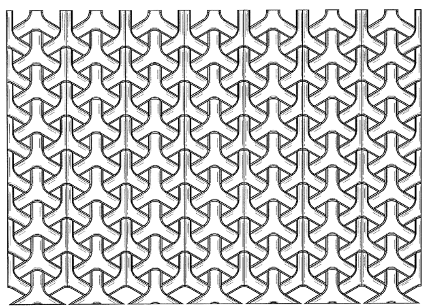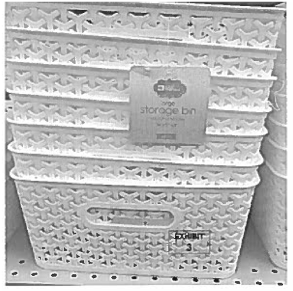
No, I’m not referring to a Cubist masterpiece.
Consider the following: After long, hard work, you’ve created a great design, say, the design above. Eureka! Your design would go great with anything. You can see it on chairs, on baskets, on car seats, on bridges, on tattooed biceps everywhere. Just think of the possibilities.
But everyone else will want to use it, too. How do you protect your design?
With a design patent, of course.
But wait a minute… 35 USC § 171, the Federal design patent statute, restricts design patents to a “new, original and ornamental design for an article of manufacture.” The USPTO, its regulations and its Manual of Patent Examining Procedure have long taken the position that designs, by themselves, cannot be protected by design patent. Only an article, say a chair, with the design applied can be patented. A disembodied design that is not attached to an article is ‘abstract’ and not patentable.
Which brings us to the case of Curver Luxembourg v Home Expressions, Inc. Curver owns US patent D677946, a design patent. The patented design is shown above. The drawings, which are the claims of a design patent, do not show the design as being attached to anything. The title of the patent application was ‘design for a furniture part.’ The patent examiner concluded that the application did not clearly identify the article to which the design is applied and suggested insertion of the term ‘chair,’ to which the applicant agreed. As issued the title of the patent is ‘Pattern for a Chair,’ and the claim is for ‘an ornamental design for a pattern for a chair.’ The drawings do not show a chair.

Curver sued Home Expressions for infringement of the design patent. The Home Expressions product is a basket, not a chair. The court dismissed the lawsuit because a basket is not a chair.
Curver, ever the glutton for punishment, appealed. Curver argued on appeal that the drawings are not limited to chairs and can include other products, like baskets. The Federal Circuit Court decided that the words of the design patent claim do matter, affirmed that chairs are not baskets, and made it home by lunch.
So there you have it. Abstract designs are out and the words of a design patent claim limit the drawings. If you have a design that you want to protect for more than one article, then you must obtain more than one design patent.
— Robert Yarbrough, Esq.

